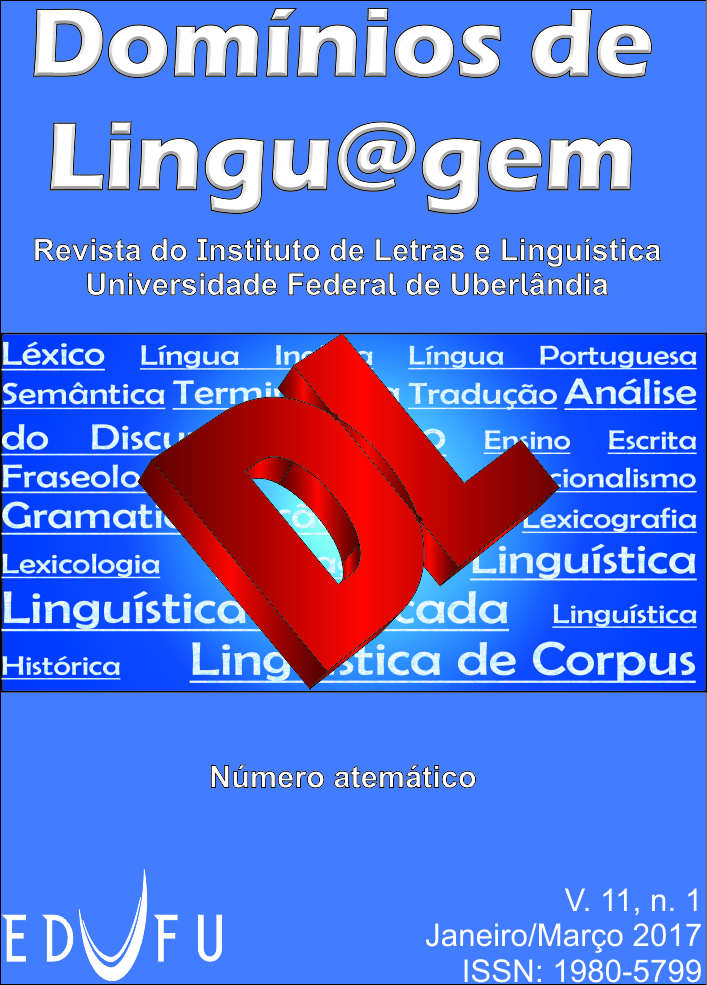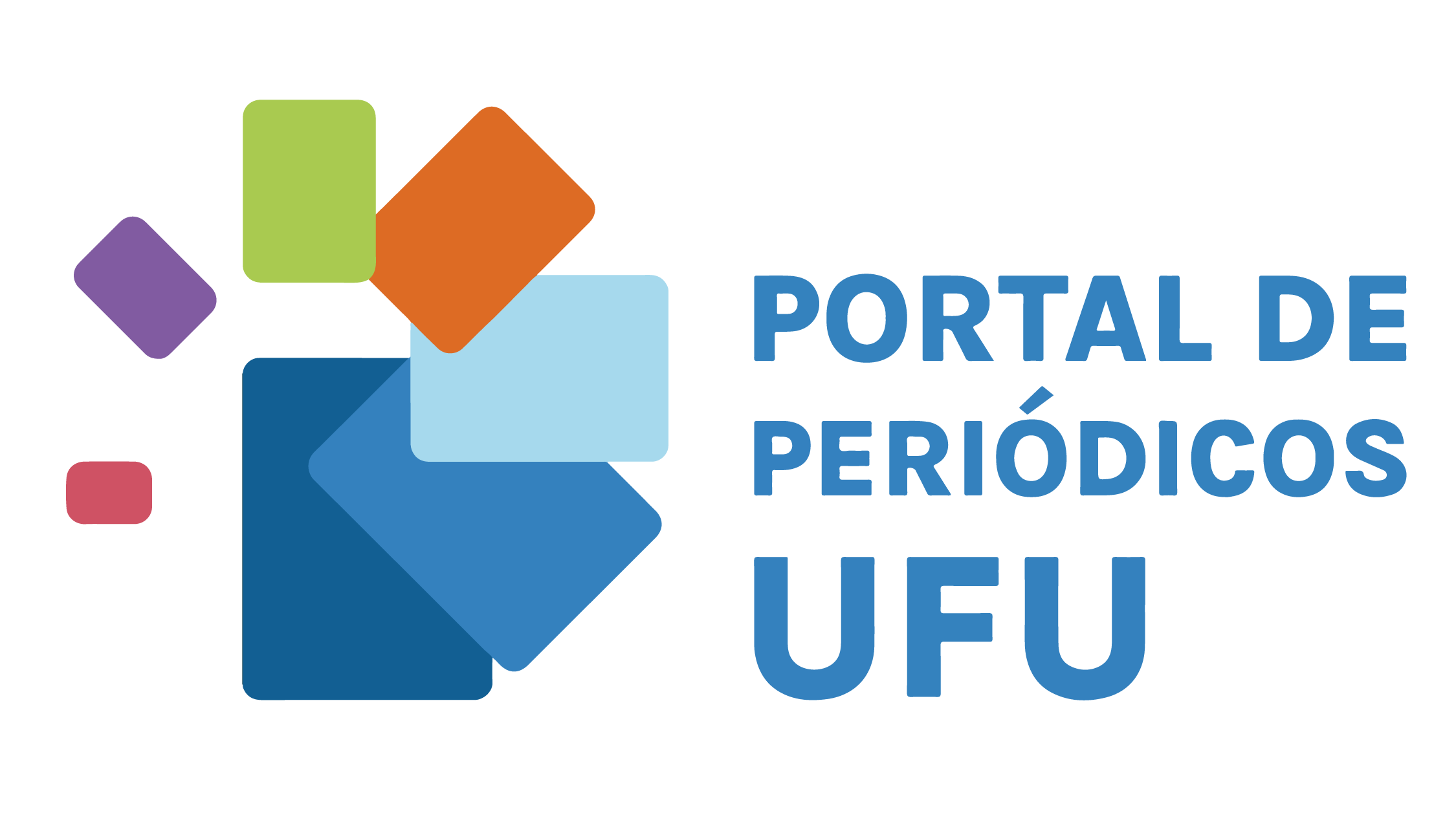Yesterday, today and tomorrow
about the web and the emerging collaborative tools for foreign language teachers
DOI:
https://doi.org/10.14393/DL28-v11n1a2017-8Keywords:
Retrospective, S/FL, Web 2.0, Collaboration, Open Educational ResourcesAbstract
Considering that “[...] it is only possible to foresee the future when looking to the past” (LEFFA, 2012, p. 404), it is necessary to investigate the past and the present of the web, the Information and Communication Technologies (ICT) and the educational technologies for the teaching and learning of Foreign Languages (FL) to speculate about the future, regardless its uncertainties. Therefore, the aim of this work is to present and discuss the changes in ICT and educational tools, from the past to the present, to point emerging perspectives to the FL teacher’s reach. The results – which come from observations about some digital tools and resources available in the Repositório Acción E/LE (Espanhol como Língua Estrangeira; S/FL: Spanish as a Foreign Language) – indicate that: (1) online resources and ICT in general do not usually deny the past, but yet include it in the new, making such resources to be in continuous evolution; (2) this evolution, consequently, happens in a gradual and complex way: not all the ICT and educational technologies change at the same time and same extent; (3) possibly, the most visible and emerging tendency is the mass collaboration implied to tools and its uses, which explains the emerging of the Open Educational Resources (OER), for instance.Downloads
Metrics
References
AGUIAR, G. A.; SILVA, J. F. M. As bibliotecas universitárias nas redes sociais: Facebook, Orkut, MySpace e Ning. In: XVI Seminário Nacional de Bibliotecas Universitárias SNBU/II Seminário Internacional de Bibliotecas Digitais (SIBDB). 2010. Anais... Rio de Janeiro - RJ: UFRJ/SiBI. 2010.
AMIEL, T. Educação aberta: configurando ambientes, práticas e recursos educacionais. In: SANTANA, B.; ROSSINI, C.; PRETTO, N. L. (Org.). Recursos Educacionais Abertos: práticas colaborativas e políticas públicas. Salvador: Edufba; São Paulo: Casa da Cultura Digital, 2012. p. 17-33.
COSTA, A. R; FIALHO, V. R. Construindo um repositório para professores de E/LE - O passo a passo. In: XVIII Jornadas de jóvenes investigadores AUGM, 2010. Anais... Santa Fe, Argentina. 2010.
______. O Repositório Acción E/LE a partir de um estudo sobre Portais Educacionais. Revista Encontros de Vista, Recife, v. 13, p. 1-16, 2014.
COUTINHO, C. M. P.; BOTTENTUIT JUNIOR, J. B. Blog e Wiki: os futuros professores e as ferramentas da Web 2.0. In: IX Simpósio Internacional de Informática Educativa (SIIE). 2007. Anais... Porto - Portugal: Instituto Politécnico do Porto, 2007. p. 199-204.
FIALHO, V. R. Comunidades virtuais na formação de professores de espanhol língua estrangeira a distância na perspectiva da complexidade. 204f. Tese (Doutorado em Linguística Aplicada) – Programa de Pós-Graduação em Letras, Universidade Católica de Pelotas. Rio Grande do Sul, 2011.
______. Mapeando os recursos didáticos da Internet para o ensino de ELE – Construindo um repositório. Projeto Programa Especial de Incentivo à Pesquisa para o Servidor Mestre (PEIPSM). Nº de registro no GAP/CAL: 026218 PEIPSM, abril de 2010.
LEFFA, V. J. Ensino de línguas: passado, presente e futuro. Revista de Estudos da Linguagem, Belo Horizonte, v. 20, n. 2, p. 389-411, jul./dez. 2012. https://doi.org/10.17851/2237-2083.20.2.389-411
______. O ensino do inglês no futuro: da dicotomia para a convergência. In: STEVENS, C. M. T.; CUNHA, M. J. C. (Org.). Caminhos e colheita: ensino e pesquisa na área de inglês no Brasil. Brasília, 2003, v. 1, p. 225-250.
______. Metodologia do ensino de línguas. In: BOHN, H. I.; VANDRESEN, P. Tópicos em lingüística aplicada: O ensino de línguas estrangeiras. Florianópolis: Ed. da UFSC, 1988. p. 211-236.
______. Sistemas de autoria para a produção de objetos de aprendizagem. In: BRAGA, J. Integrando tecnologias no ensino de Inglês nos anos finais do Ensino Fundamental. São Paulo: Edições SM, 2012, p. 174-191.
______. Uma ferramenta de autoria para o professor: o que é e o que faz. Letras de Hoje, Porto Alegre, v. 41, n. 144, p. 189-214, 2006.
LÉVY, P. Cibercultura. Trad. Carlos Ireneu da Costa. 3. ed. São Paulo: Ed. 34, 2010a.
______. A inteligência coletiva. Por uma antropologia do ciberespaço. Trad. Luiz Paulo Rouanet. 6. ed. São Paulo: Edições Loyola; 2010b.
O’REILLY, T. What is Web 2.0? Design Patterns and Business Models for the Next Generation of Software. Communications & Strategies, n° 65, 2007. Disponível em: <http://papers.ssrn.com/sol3/papers.cfm?abstract_id=1008839>. Acesso em: 24 set. 2015.
PAIVA, V. M. O. A tecnologia na docência em línguas estrangeiras: convergências e tensões. In: SANTOS, L. L. C. P. (Org.). Convergências e tensões no campo da formação e do trabalho docente. Belo Horizonte: Autêntica, 2010, p. 595-613.
______. Inovações tecnológicas: o livro e o computador. In: VETROMILLE-CASTRO, R.; HEEMANN, C.; FIALHO, V. R. (Org.). Aprendizagem de línguas: CALL, atividade e complexidade. Uma homenagem aos 70 anos do Prof. Dr. Vilson José Leffa. Pelotas: Educat, 2012, p. 13-29.
______. O uso da tecnologia no ensino de línguas estrangeiras: breve retrospectiva histórica. In: JESUS, D. M. de; MACIEL, R. F. (Org.). Olhares sobre tecnologias digitais: linguagens, ensino, formação e prática docente. Coleção: Novas Perspectivas em Linguística Aplicada. Vol. 44. Campinas, SP: Pontes Editores, 2015, p. 21-34.
PAIVA, V. M. O.; BOHN, V. C. R. O uso de tecnologias em aulas de LE: dos recursos off-line à web 2.0. In: BRAGA, J. C. F. (Org.). Integrando tecnologias no ensino de inglês nos anos finais do ensino fundamental. São Paulo: SM, 2012, p. 57-84.
SUROWIECKI, J. A Sabedoria das Multidões - Por que muitos são mais inteligentes que alguns e como a inteligência coletiva pode transformar os negócios, a economia e a sociedade. São Paulo: Editora Record. 2006.
TAPSCOTT, D.; WILLIAMS, A. Wikinomics. Como a Colaboração em Massa Pode Mudar o Seu Negócio. Rio de Janeiro: Nova Fronteira, 2007.
TECHTUDO. Twitter imita o Facebook e usa botão ‘curtir’ no lugar de ‘favoritar’. 2013. Disponível em: <http://www.techtudo.com.br/noticias/noticia/2013/11/twitter-imita-o-facebook-e-usa-botao-curtir-no-lugar-de-favoritar.html>. Acesso em: 29 out. 2015.
Downloads
Published
How to Cite
Issue
Section
License
Authors who publish in this journal agree to the following terms:
Authors retain the copyright and waiver the journal the right of first publication, with the work simultaneously licensed under the Creative Commons Attribution License (CC BY-NC-ND 4.0), allowing the sharing of work with authorship recognition and preventing its commercial use.
Authors are authorized to take additional contracts separately, for non-exclusive distribution of the version of the work published in this journal (publish in institutional repository or as a book chapter), with acknowledgment of authorship and initial publication in this journal.









